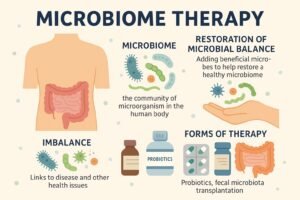Triple-negative breast cancer (TNBC) is a challenging type of breast cancer known for its aggressiveness and limited treatment options. However, there’s hope on the horizon in the form of immunotherapy, particularly a treatment called immune checkpoint blockade (ICB). While ICB has shown promise for some TNBC patients, it doesn’t work the same way for everyone. In a recent study published in Nature, researchers decided to dig deep into the inner workings of tumors to figure out why some patients respond well to ICB while others don’t.
Using advanced imaging techniques, they examined how different types of cells in the tumor, their activation levels, and where they were located inside the tumor influenced the effectiveness of ICB treatment. They collected samples from TNBC patients at three key moments: before treatment began, early on in the treatment process, and after treatment was completed. The study uncovered some crucial findings. First, the type and activation state of certain cells within the tumor turned out to be vital in determining whether ICB would work. Specifically, cells known as CD8+TCF1+T cells and MHCII+ cancer cells played a significant role in predicting how well the treatment would work.
Additionally, the researchers found that the way different types of cells interacted with each other within the tumor was crucial. The presence of certain cells, like B cells and granzyme B+ T cells, influenced whether the ICB treatment would be successful or not. What’s really fascinating is that these differences between tumors that responded well to ICB and those that didn’t could be seen quite early in the treatment process. This suggests that by analyzing tumor samples taken at the start of treatment, doctors might be able to predict whether a patient will respond to ICB or not. This information could help them make better treatment decisions.
One more important point the study made is that by combining information from before treatment and during treatment, doctors can make the most accurate predictions about how well ICB will work. This means that monitoring changes in the tumor’s environment during treatment could be a critical part of improving treatment outcomes.
This research is a big step forward in understanding why some TNBC patients respond to ICB while others don’t. The way cells behave, interact, and where they’re located within the tumor seems to be the key. This knowledge brings us closer to the idea of “precision immuno-oncology,” where treatments can be tailored to each patient’s unique tumor characteristics. It also suggests that early biopsies and ongoing monitoring during treatment could become crucial tools in fighting this challenging form of breast cancer.
Source: Wang, X.Q., Danenberg, E., Huang, CS. et al. Spatial predictors of immunotherapy response in triple-negative breast cancer. Nature (2023). https://doi.org/10.1038/s41586-023-06498-3

